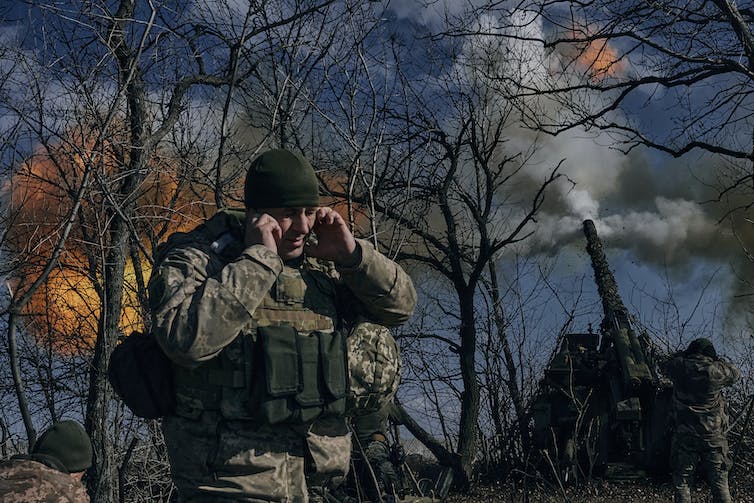The eastern Ukrainian city of Bakhmut is the present focal point of the Russian-Ukrainian conflict.
The battle for the city, which began in the summer of 2022, is still going strong. The conflict has changed from being of questionable immediate strategic benefit to Russia to becoming a symbol of its war operations. It also draws attention to the present shortcomings in the Russian military.
In battle, symbolism is nothing new. Despite having strategic considerations, Adolf Hitler’s emphasis on the battle’s symbolic significance made it crucial.
Moreover, symbolic actions can have strategic effects beyond of their direct military implications. The issue arises when symbolism takes precedence over logical planning.From a purely military perspective, Bakhmut does not dramatically alter the course of the conflict. Bakhmut’s defense for Ukraine, however, is in line with the justifications offered by President Volodymyr Zelenskyy, who has stated that he will accept nothing less than the complete restoration of his nation.
Defenders benefit from urban warfare because they have a thorough understanding of the environment that aggressors lack. However, when an army depends as much on artillery and tactical bombing as the Russian army does, it runs the risk of building new enemy defensive positions in the ruins of the ones they’ve already destroyed.
The Russian army has often had to relearn this lesson, particularly in Chechen, and has since lost it.
An army must rely on its troops and their officers’ initiative to win the day in order to deal with these issues. This is not feasible for the Russian armed forces due to their centralized command structure, low morale, and subpar equipment standards.Russia’s justifications for the conflict in Ukraine, including whether it still views it as one at all, have evolved over time. But the invasion’s goal of defending Ukraine’s ethnic Russian-speaking people has emerged as a recurring theme.
Bakhmut is in the region of Ukraine that Russia regards as the Donetsk People’s Republic, which has a sizable ethnic Russian population.
Russia has to have authority over the Donetsk and Luhansk Peoples’ Republics in order to at least declare victory. These two organizations are located in the Donbas, a region important to Russian culture. In actuality, the area was depicted in 1920s Soviet propaganda as being in the center of Russia.Russian President Vladimir Putin, as a result, cannot easily suffer setbacks in the region.
Studies on how the war is affecting Putin’s popularity are admittedly problematic. What is known, however, is that Putin relies on the support of Russian nationalists to maintain his position, and taking the Donbas is crucial for that base.
That’s why Russia continues its efforts in Bakhmut and the surrounding region despite Ukraine alleging between 10,000 to 20,000 Russian troops have died there.
These casualties are being magnified by the divides that exist within Russia’s political establishment.
Putin succeeded in establishing a system where overlapping responsibilities mean that he ultimately acts as the arbiter of power. While that system is effective in maintaining Putin’s position in Russian politics, it has some severe disadvantages.





